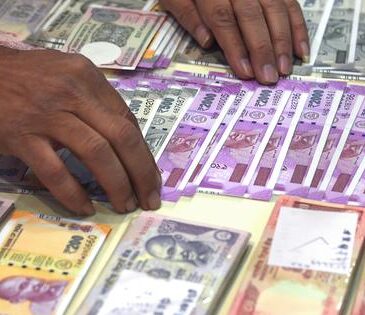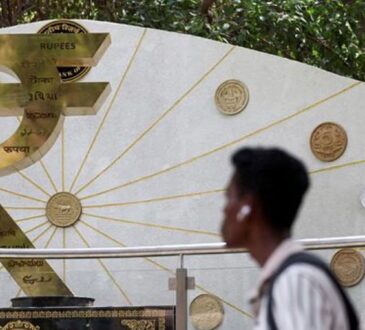Overview: There has been little follow-through dollar buying today after its recovery in North America yesterday. The greenback is softer against most of the G10 currencies. The Antipodeans are lagging alongside the Norwegian krone, perhaps weighed down by the sharp drop in oil prices following President Trump’s indication and a deal with Iran may be near. Switzerland reported stronger-than-expected Q1 GDP, and the franc is the strongest of the G10 currencies followed by the Japanese yen. Most emerging market currencies are firmer. The handful of exceptions in China, India, Thailand, and Russia.
Equities are struggling today. Most of the large bourses in the Asia Pacific region fell. India, Australia, New Zealand, and Singapore managed to eke out gains. Of note, Japan’s Topix, which snapped a 13-day advance yesterday, saw more profit-taking today. Europe’s Stoxx 600 is off for the second consecutive session. Yesterday’s loss ended a four-day advance. The S&P 500 and Nasdaq futures are a little more than 0.5% lower. European 10-year yields are mostly a couple basis points lower, while the 10-year Treasury yield is three basis points lower near 4.50%. Gold extended yesterday’s losses and fell to almost $3120, its lowest level since April 10. It has recovered to almost $3177. It must retake $3200 to stabilize the tone. The prospect of a deal with Iran sent June WTI to a new low for the week near $60.50. The next area of chart support may be around $59.60.
USD: The Dollar Index reached almost 100.25 yesterday in Europe, a three-day low, but was bid in North America to new session highs, and recovered to nearly 101.15, leaving a potential bullish hammer candlestick pattern in its wake. DXY held trendline support off the late April and early May lows found near 99.90 today, which is also about where the (50%) retracement of the gains since the April 21 low is found. However, there has been no follow-through buying today. DXY was capped near 101.00 and retreated to around 100.60. There is a slew of US data today, and something for everyone. There are two Fed surveys (NY and Philadelphia). There are two real sector reports (retail sales and industrial production), price data (PPI), and March business inventories. Note that the Chicago Fed’s model on real-time spending warns that retail sales, excluding autos may fall by 0.6%. The median in Bloomberg’s survey calls for a 0.3% gain. The Atlanta Fed GDP Now sees the economy tracking 2.3% growth here in Q2 and will update its findings after today’s reports. The postponement of the harshest US and China tariffs have prompted economists downgrade the risks of a US recession and upgrade forecasts for Chinese growth this year. Fed Chair Powell discusses the policy framework review. There is no Q&A, and the Fed chair will likely stay away from topics he avoided at the post-FOMC press conference, like is relationship with the president.
Euro: The euro reached a three-day high near $1.1265 in the European session yesterday, and during the North American session, it was sold back to $1.1165. The high met the (61.8%) retracement objective of the leg down from last week’s high (~$1.1380) and the (38.2%) retracement of the larger move since the year’s high was set on April 21 (~$1.1575). The euro held yesterday’s low today and recovered to around $1.1230. The eurozone revised Q1 GDP to 0.3% from 0.4%. Separately, it reported that the second consecutive rise in the aggregate industrial production was greater than 1%, for the first time since August-September 2022. It soared 2.6%, well above the median forecast for a 2% increase.
CNY: The dollar rose for the first time yesterday in four sessions against the offshore yuan. It recovered from a six-month low on Tuesday (~CNH7.1790) to about CNH7.2160 yesterday. It is consolidating quietly today in the upper end of yesterday’s range and has traded between about CNH7.2030 and CNH7.2155. The next technical target is in the CNH7.2230-50 area. The yuan has gained about 0.85% against the dollar here in May, making it the third best performing currency in the region after the Taiwanese dollar (~5.7%) and the South Korean won (~1.5%). The PBOC set the dollar’s reference rate at higher for the first time this week (CNY7.1963 vs. CNY7.1956). It is the third higher fix in the past 13 sessions.
JPY: The dollar traded in a nearly two-yen range yesterday and settled a little above the middle of it near JPY146.80. It briefly traded through Monday’s low (~JPY145.70) late in the European morning and traded above JPY147 early in the NY afternoon. It settled near JPY146.75 yesterday and has not traded above it today. Instead, it was pushed back to JPY145.50. A move above JPY146.30 would help steady the tone. Japan will provide is first estimate of Q1 GDP on Friday. A small contraction is expected. There may have been three drags: public consumption, private investment, and net exports. Consumption and inventories may have been offsets. Meanwhile, Nissan announced it will close seven factories (out of 17 globally) and lay off 20k employees, which is 11k more than it previously announced following the poor earnings released on Tuesday.
GBP: Sterling saw a five-day high near $1.3360 a little before the North American session began yesterday, but trended lower subsequently and fell to about $1.3255, to record a new session low in the North American afternoon. It is trading in a $1.3260-$1.3305 so far today. Q1 GDP was reported. It expanded by 0.7%, a little better than the market and the Bank of England expected. Consumption improved sequentially (0.2% vs 0.1%), though not as much as anticipated. Total business investment showed unexpected strength (5.9% vs. -1.9% in Q4). Government spending surprisingly fell by 0.5%. Economists had expected another 0.5% increase, the same as in Q4 24. March GDP rose by 0.2%, but industrial output fell by 0.7%, with manufacturing off 0.8%. Services output rose 0.4% and construction improved by 0.5%. The trade deficit narrowed with and without the precious metals trade.
CAD: On yesterday’s pullback, the US dollar held above Monday’s low slightly below CAD1.3900. It recovered to CAD1.3985. It is trading firmly in the upper end of yesterday’s range. It has been confined to a narrow CAD1.3960-90 range so far today. The greenback needs to surmount the CAD1.4015-20 area that capped it on Monday and Tuesday to lift the technical tone. Canada’s high-frequency data today includes manufacturing and wholesale sales and existing home sales. They are not typically drivers of the Canadian dollar or Canadian interest rates. Tomorrow’s March portfolio flow report may be of some interest. In the first two months of the year, Canada reported net inflows of about C$1.45 bln. This compares with $9.2 bln in the first two months of 2024 and $11.1 bln in Jan-Feb 2023.
AUD: The Australian dollar briefly poked above $0.6500 yesterday holding below last week’s six-month high near $0.6515. It was turned back and fell to almost $0.6420 in the North American afternoon. It has failed to get much traction and has been sold slightly through yesterday’s lows to $0.6415 despite the stronger employment data. A break of the $0.6400-10 area will re-target this week’s low in the $0.6355-60 area. The 89k increase in jobs was more than three-times what was expected and follows a 36.4k increase in March. Of those jobs, 59.5k were full-time positions (12.2k in March). For the fifth consecutive month, the unemployment rate is holding between 4.1% and 4.2%. This is particularly impressive given the rise in the participation rate to 67.1% from 66.8%, a three-month high. Still, the market is confident of that the Reserve Bank of Australia will cut rates next week and deliver two more cuts before the end of the year.
MXN: The combination of the resilience of the Mexican peso, which set new highs for the year yesterday, weak economic impulses, and inflation within target range, even if barely, allows Banxico to deliver its third consecutive half-point cut later today. The dollar fell to nearly MXN19.30 yesterday in North American turnover before recovering to around MXN19.39. It has been confined to a narrow range of about MXN19.36-MXN19.40. It has hardly been able to re-enter the lower Bollinger Band (~MXN19.3725). A 50 bp cut today would bring the overnight target rate to 8.50%. We suspect that the central bank may signal a more moderate pace of easing, while keeping policy restrictive. The swaps market is pricing in a year-end rate between 7.25% and 7.50%.




